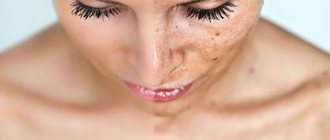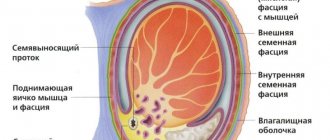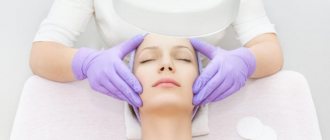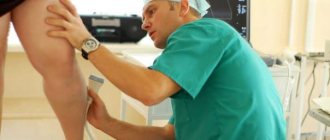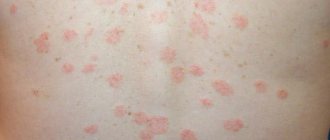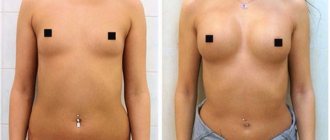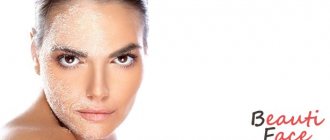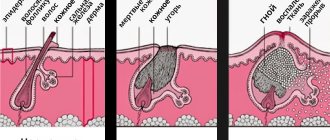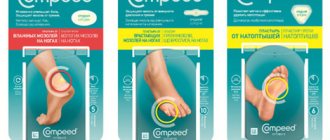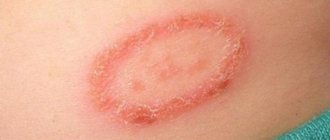Calluses on the feet are common, as are corns - dry calluses that require attention in order to return the feet to an attractive appearance and sensitivity in time. When choosing an appropriate treatment method, you should consider common methods of combating corns, discarding less attractive options. We will attach pictures to many of the options for a better understanding of the impact.
Steaming legs
What are corns?
Corns on the feet are the result of overgrowth of the tissues of the upper layer of skin. The human skin consists of three parts:
- The surface layer is the epidermis, which provides protection from external factors;
- The middle layer is the skin itself, or dermis. It is here that there are clusters of blood capillaries and roots of nerve receptors of the peripheral system;
- The hypodermic layer is the fatty subcutaneous tissue. It provides protective functions when the skin is overheated or hypothermic.
With irrational distribution of physical or mechanical load, the cells of the outer part increase in volume, grow and, as a result, become keratinized. This results in hardness and increased density of the corns.
Visually, corns on the feet are a thickened layer of rough, hard skin, usually dark yellow or dark white, slightly dirty in color. Sometimes they resemble a dry callus, and often because of this, a person who has developed corns mistakenly treats the callus. In fact, there are fundamental differences between these two skin pathologies in the causes of their appearance, symptoms, and treatment methods.
What are there
As mentioned above, calluses are a protective reaction of the skin to prevent damage, cuts or infection. Often the “response” to skin irritation is:
- dry calluses – gray-yellow dense “plaques” on the skin;
- wet calluses, which are blisters with clear or bloody contents.
Wet calluses develop on thin skin due to the accumulation of fluid underneath. The process of occurrence and healing resembles a wound or cut. Corns appear on the thick skin of the feet in the form of compaction areas, have a gradual development and a long course.
Causes
Most often, corns on the feet form in people whose activities or hobbies involve physical activity. The main part of this impact occurs on the feet, as a result of which increased pressure is created on the top layer of skin - the epidermis.
The greatest tendency to this problem is observed among dancers who are constantly on their feet during performances and rehearsals. Similarly, corns are a cost of the professional activities of athletes - regular training practically does not allow the feet to get normal rest. Another risk category is the military and representatives of law enforcement agencies, who, as part of their duty, have to wear special hard shoes and spend hours on the parade ground, honing their drill service skills.
Along with these specialties, representatives of construction specialties are at risk of developing corns. Sellers of shops and markets have no less problems with this pathology - while standing behind the counter, it is almost impossible for them to avoid this disease.
In addition to these reasons related to professional activity, the following factors can provoke the formation of corns:
- Wearing oversized socks, which causes them to bunch up and put pressure on the foot;
- Using shoes made of artificial materials without breathability - as a result, increased humidity is created inside, which contributes to chafing of the skin of the feet;
- Frequent presence of foreign objects in shoes - litter, small stones, sand. This causes chafing of the epidermis;
- Frequent lifting of heavy objects;
- Insoles in shoes with deformation;
- Progression of fungal diseases of the feet - in this case, corns appear as a secondary disease;
- Varicose dilatation of peripheral blood vessels - in these circumstances, corns are a characteristic clinical symptom of the disease;
- Flat feet;
- Dehydration of the upper layer of the skin - the epidermis;
- Formation of bone tumors – osteophytes;
- All stages of diabetes.
Quite often, this disease affects people who like to walk barefoot and have no control over the condition of their feet. The opposite of this category are people who do not take care of their feet at all and do not even follow the general principles of hygiene. Their calluses are caused by unsanitary conditions of the feet. The probable risk group also includes persons whose weight is clearly above acceptable standards, or who are obese of any degree.
At the same time, there are some other provoking factors - they contribute, although they do not themselves cause the formation of corns on the feet. These include: increased sweating or hyperhidrosis, rheumatoid arthritis, pathologies of microcirculation of blood flow in the feet or the entire lower limb. This also includes injuries and their consequences, pronounced signs of hypovitaminosis.
The main signs and accompanying causes of the appearance are problems with shoes and increased moisture in the feet - abnormal sweating, wearing high-heeled shoes, tight shoes, especially winter ones.
Wrong actions
Mechanical callus removal
When planning how to remove dry callus, people rarely seek advice from a doctor, regardless of the severity of the problem. Of course, there is no need for unnecessary concern in the case of isolated corns. But to effectively get rid of complex dry calluses with a core, a visit to a doctor is recommended. This usually speeds up the healing and healing process, and also protects against mistakes in choosing remedies. For example, inexpensive Chinese patches may initially contain a high amount of acid. The danger of using them is:
- risk of chemical burn to a healthy area of skin;
- development of an allergic reaction to the active component;
- problems with healing of wounds located next to the callus.
Experts warn about the dangers of trying to self-medicate dry calluses for skin health. Highly not recommended:
- Removing dry calluses using a rough mechanical method: cutting, picking in order to pull out the core, etc. The result of such actions is always damage to surrounding tissues and increased vulnerability to infection.
- Use aggressive recipes with acids to soften keratinized tissue. Pharmacy products with a seemingly delayed effect represent a balance of aggressive effects and safety for healthy areas of the skin. Its violation leads not only to accelerated destruction of the corneocyte layer, but also to serious damage to healthy tissue.
- Pierce, cut, cut, and otherwise remove dry calluses using non-sterile instruments. Every wound on the skin is a potential risk of infection.
An incorrect approach to healing dry calluses poses a fairly serious risk to the patient’s health. The acid in an incorrectly selected folk remedy not only repeatedly removed the core from the corneocytes, but also led to serious damage to healthy tissue.
Calluses are usually removed to relieve the discomfort they cause. But in this case, one serious skin damage is replaced by another. It is difficult to say which of them is more dangerous, but in both cases there is a risk to the patient’s health.
Clinical signs of corns
Symptoms appear from the first days of their appearance. First, a convex lump forms on the foot, and redness of the skin becomes noticeable. Gradually the swelling increases in size. When pressing in this place there is no sensation.
The contour of the swelling is unclear, of arbitrary shape. Gradually, microcracks may appear at the site of swelling. As the disease progresses, the deformity of the thumb increases. At later stages of the development of corns on the feet, dull or pulling pain occurs. It usually occurs while walking or lifting heavy objects.
The more pronounced the clinical symptoms are, the higher the likelihood of developing pathological consequences of this disease.
Against this background, the following diseases can arise and progress:
- Any form of arthritis;
- Acute bursitis;
- Ulcerative lesions;
- Mycoses;
- Diabetic foot;
- Capillary effusions when the integrity of blood vessels is violated.
Types of corns
The intensity of the manifestation of symptoms depends on the shape, type and location of the corns.
There is a classification that takes into account the characteristics of characteristic features and causal factors:
- Plantar form - most often occurs due to the use of tight shoes or walking in high heels. The corns in this case are not painful, but they are large in size, and with this form the upper part of the skin quickly becomes rough;
- Finger form - usually occurs on the thumb. The cause may also be uncomfortable shoes, as well as excessive physical activity, increased moisture in the feet, including profuse sweating;
- Rod form - in this case, the corns are small in size; a rod is formed in its middle, which can be identified by a small dark dot on the top layer of the skin. The rod itself goes deep into the underlying layers of the skin - the dermis and subcutaneous tissue. This form of the disease manifests itself more often as a secondary symptom in certain diseases. Most often it is a consequence of the herpes virus and develops with rheumatism or arthritis.
Depending on the location of corns on the feet, there are 6 varieties. This disease is characterized by the fact that the place of its manifestation is closely related to pathologies of internal organs, supporting apparatus and joints:
- When the disease develops in the area of the inner surface of the foot, problems with the intestinal tract can be judged;
- If corns have formed on the heel, this indicates the risk of developing arthrosis or arthritis in various forms;
- If the problem area is the outer surface of the foot, this is a clear sign of disorders in the spinal column;
- The appearance of swelling and roughening of the skin on the thumb indicates pathologies of a gynecological nature;
- On the right little finger, a corn appears as a consequence of gallbladder diseases and liver pathologies;
- Corns on the left little finger are a consequence of disruptions in the functioning of the heart and circulatory system.
Visiting a beauty salon
If you don’t want to take care of yourself personally, go to a beauty salon. They work with corns, making your feet fresh and attractive. In beauty salons, pedicurists can offer two methods of influencing problem areas:
- manual pedicure;
- hardware pedicure.
Pedicure differences
Manual pedicure is the cheapest, can be easily done at home, and consists of the following steps:
- Steaming the legs. At home - in the basin, in the salon there are special baths for pedicures;
- Applying a mask to the feet. Masks are applied to the soles and upper surface of the feet; they can be a special gel; they make the skin softer and more pliable;
- Removal of rough skin. The salon uses tools you have at home - a pumice stone, a brush or a hand file for feet.
A hardware pedicure in a salon will remove the most stubborn calluses. True, it will not be possible to cut everything once. A special Scholl file or its analogues will help improve the condition of your feet. It cuts away rough skin in layers, removing dead cells. This pedicure can be done by a specialist, supplemented with home protection complexes. If a branded file is expensive, consider options from Chinese manufacturers.
In beauty salons, during a pedicure, they make masks to moisturize, nourish and restore the legs. You can relax, get real pleasure, and take a break from the hustle and bustle of everyday life. Pedicure masks have not only a relaxing effect. With regular procedures, your feet will quickly return to their former beauty and attractiveness.
Diagnostic methods
The main way to establish the fact of an illness is a clinical examination. By palpation and detection of pain, it is also possible to distinguish this disease from an ordinary callus.
In addition, during a clinical examination, the doctor collects anamnesis from the patient’s words, determining the intensity of the disease, the period of its progression, location, as well as other important factors.
If necessary, a puncture is performed for differential diagnosis to distinguish a corn from a callus or benign neoplasms. This method makes it possible to detect the absence of purulent or bloody fluids inside the swelling.
Treatment options
Therapeutic prescriptions differ depending on the type.
With the rod form, baths for the lower extremities with flaxseeds are indicated. You need to take 2 tablespoons per 1 liter of boiled water and leave for 10-15 minutes. You can steam your feet 1-2 times a day until the swelling disappears.
A bath of soapy water and 2 tablespoons of baking soda helps remove the rod.
In addition, to remove corns, the following products from the pharmacy are recommended:
- Superanizoline;
- Stop callus;
- Nemazol.
A good result with this form is achieved by a hardware pedicure with anti-inflammatory components or iodine.
For the plantar or digital form, methods such as: Cauterization using liquid nitrogen are recommended; Laser destruction;
Cryodestruction is the effect of extremely low temperatures on the affected area of the foot.
For all forms, the following keratolytic drugs have proven their therapeutic effectiveness:
- Bensalitin;
- Green Planet;
- Doctor;
- Tean De;
- Neutrogena;
Another effective remedy is patches with anesthetics and components applied to their surface that soften dead skin cells of the epidermis. Compeed, Urgo, and Salipod patches are famous for their greatest effectiveness.
From the folk recipe, garlic ointment is recommended (100 g of pork or goose fat per 2 tablespoons of chopped garlic), an onion compress from 1 chopped onion at night, as well as baths with a solution of hydrogen peroxide - 120 ml per 2 liters of warm water.
Prevention measures
At every opportunity, it is advisable to take off your shoes and give your feet a rest. You should also change your socks on time and select them strictly according to size. People who work physically should limit excessive activity and get rid of excessive stress.
To avoid herpes, you should not be barefoot in public saunas and baths, and under no circumstances use other people’s shoes.
Following these simple principles will eliminate the risk of corns on your feet. And knowledge of the symptoms and treatment methods will ensure timely relief from the problem without complications in the early stages. And another important recommendation is not to avoid competent medical care. At the first sign of corns, immediately go to the clinic to see a dermatologist - and then you will never waste time treating this pathology.
Advantages and disadvantages
As a rule, salicylic acid is included in the composition of such ointments. Therefore, a reasonable question arises: how effective are ointments for corns than creams or patches? This dosage form has its pros and cons. The ointment is convenient to store in a closed tube; most often it is the most accessible dosage form of all existing ones. In addition, people note high efficiency and quick results.
However, there are also disadvantages. Ointments for corns must be used very carefully so that the product does not come into contact with healthy skin. It is imperative to test for an allergic reaction, since such an outcome is quite possible. Finally, it should be noted that ointment for corns on the feet will not help if the form is advanced.
